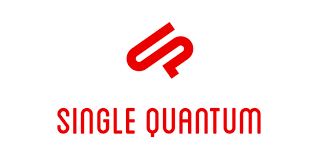
SNSPDs
When a new way of doing something comes along — say in technology or business — it is inevitably followed by excitement and hope, as well as the all too common overextended hype. This has strongly been the case in quantum information science (QIS) and quantum computing (QC) over the last decade and is certainly set to continue into the new decade. Google’s published results of achieving quantum supremacy in 2019 are proof of this.
When first developed by researchers at the Moscow State Pedagogical University and at the University of Rochester in the early years of the 21st century (before a fully-operational prototype was built in 2005 by work done in conjunction with the University of Rochester, NIST and BBN Technologies as part of the DARPA Quantum Network), the superconducting nanowire single-photon detector (SNSPD) didn’t garner the media attention that Google did some fifteen years later. And just because something doesn’t gain an audience, doesn’t mean it is no less important. It’s like comparing Blues legend Robert Johnson to Canadian superstar Justin Beiber in respect to their accumulated wealth, Twitter followers and the number of screaming teenage girls who adore them in relation to their musical legacies.
Because genuine talent or real discoveries oftentimes pass the general public by until their appreciated for what they truly are, revolutionary. The SNSPD, a type of near-infrared and optical single-photon detector based on a current-biased superconducting nanowire, is such technology and is currently the most effective and quickest way to detect single photons.
Dutch photon-detection startup Single Quantum, founded in 2012 and based in Delft at the YES!Delft labs, a startup incubator — a city already a European hotbed for quantum research and commercial ventures — believes light detectors are decisive components for the further development of the telecommunications and optical imaging industries. Proud to boast it’s the first European concern building and commercializing the cutting-edge approach of superconducting single-photon detectors, Single Quantum’s goal is to be the leading player on the market in multi-channel photon detection systems. Already partly there as over eighty labs across the globe, both in the industrial and academic fields, have chosen Single Quantum’s solutions for demanding optical measurements, the trend is set to continue in the future.

High Efficiency. Unrivalled Time Resolution
— Single Quantum
Single Quantum
Offering two products, the Single Quantum Eos Multi-channel SNSPD closed-cycle and the Single Quantum Iris-S19 next-generation single-photon spectroscopy systems, they can be applied to solutions in two-photon quantum interference, photon antibunching, as well as laser ranging for environment monitoring, proving SNSPD technology is the real deal.
Cofounders Sander Dorenbos and Val Zwiller, along with their team of highly-trained professionals in research and application engineering, software development and test engineering, make Single Quantum the go-to company for single-photon detection solutions.

A €50,000 grant from EASME, the EU Executive Agency for SMEs grants in 2017, has helped CEO Dorenbos, who has a Ph.D. from TU Delft in quantum optics, quantum computation and information processing, and CSO Zwiller, a professor of applied physics at the KTH Royal Institute of Technology, Stockholm, develop Single Quantum’s IP further.
In an industry where funding can sometimes be key to development, the support the startup receives from the incubator YES!Delft, not to mention the energy and intelligence of the team on board, will be crucial for Single Quantum’s journey in the most exciting tech industry around.
For more market insights, check out our latest quantum computing news here.


















